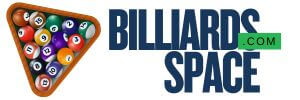The Mystery Behind Snooker Cues’ Flat Side
Ever wonder why you have this flat piece of your snooker stick? Seems like an odd detail, right? Well, it serves an important purpose.
Often called a “butt,” this flat section is not only there to look elegant. In fact, its shape and size directly affect the way a white ball is struck. The edge allows you to control the angle and power of the beating by providing a firm, consistent surface for the hand bridge.
The flat side also helps minimize unwanted white balls, allowing you to execute more accurate shots. This is especially important with Snoker, where accuracy and control are paramount.
FAQ:
Why do snooker cues have a flat side?
The flat side of the Snoker’s Stick is called the “Butt”. It serves a variety of important purposes. First, it helps the player consistently maintain the stick and control its movement when executing hits. The flat surface provides a stable hand base, allowing for accurate targeting and consistent contact with the ballball. Second, the tip acts as a weight distribution mechanism, balancing the stick for a smooth swing and minimizing unwanted vibration and oscillation. Finally, the flat sides help the player stick with the body, ensuring proper mechanics for hits and optimal ball control.
Is there any historical reason behind the flat side on snooker cues?
The exact origin is not clear, but the flat side probably evolved gradually as part of the development of the game. Snoker’s first hangouts may have been less sophisticated, and players would likely have discovered the advantages of a flat surface for grip and control. As the game became more standardized and competitive, the flat side became an essential design feature. It is worth noting that some older stands may have slightly different designs and limbs, reflecting fluctuations in manufacturing techniques and personal preferences over time.
Does the size of the flat side affect cue performance?
Yes, the dimensions of the flat sides, also known as the butt, can carefully affect the performance of the pile. In general, wider rears provide a larger bonding surface and improve stability and control for players with larger hands. On the contrary, narrower rears can provide greater flexibility and improved response, especially for players who prefer a lighter feel and more complex hitting techniques. Ultimately, the ideal size depends on individual preference and style of play.
Are there any special techniques for gripping the cue with the flat side?
There is no definitive “right” way to catch the edge of a stoma. Experienced Snoker players often develop their own styles based on factors such as hand size, handle power, and personal comfort. However, some general principles include maintaining a relaxed but steady handle and ensuring that your hands are centered over the stoma edge and in smooth, fluid motion.
Can I customize my snooker cue’s flat side?
While altering the original design of a professional quality steal is a challenge, there are options to adapt the end of the snooker stick. Some manufacturers offer stands with customizable limb designs or allow modifications later. You can consider wrapping the ends with traction material for better traction or adding personal engraving for aesthetics.
